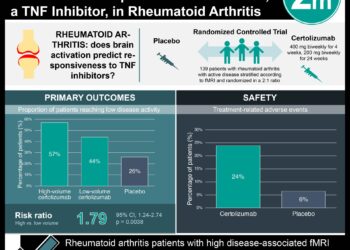2 Minute Medicine Rewind February 5, 2018
Catheter Ablation for Atrial Fibrillation with Heart Failure
Atrial fibrillation (AF) in patients with heart failure is associated with an increased risk of stroke, hospitalization for heart failure, and death. The standard therapy for AF in the setting of heart failure is rhythm or rate control using pharmacologic agents. A number of studies have shown that catheter ablation is associated with positive outcomes in patients with drug-resistant, symptomatic AF and otherwise normal cardiac function. In this randomized controlled trial, 398 patients with antiarrhythmic drug-resistant AF and heart failure were randomized to receive catheter ablation or medical-therapy to evaluate whether catheter ablation improves the rates of progression of heart failure or death. Researchers followed patients for a median of 38.7 months (interquartile range (IQR) 22.3 to 60.0 months) and found that significantly fewer patients in the ablation group required hospitalization for worsening heart failure compared to patients in the medical-therapy group (HR 0.62, 95% CI 0.43 to 0.87, p=0.007). There were also significantly fewer cardiovascular-related deaths (HR 0.49, 95% CI 0.29 to 0.84, p=0.009) and deaths due to any cause (HR 0.53, 95% CI 0.32 to 0.86, p=0.01) in the ablation group compared to the medical-therapy group. Furthermore, the median absolute increase in left ventricular ejection fraction (LVEF) from baseline to the 60-month follow-up visit was 8.0% (IQR 2.2% to 19.1%) in the ablation group and 0.2% (IQR -3.0% to 16.1%) in the medical-therapy group (p=0.005). Limitations of this study included the lack of blinding in randomization and treatment, which may have led to bias in decisions such as whether to admit a patient for worsening heart failure. Overall, the findings from this study suggest that catheter ablation results in lower rates of death and hospital admission for heart failure than medical therapy in patients with concurrent AF and heart failure.
Tisagenlecleucel in Children and Young Adults with B-Cell Lymphoblastic Leukemia
Tisagenlecleucel is an anti-CD19 chimeric antigen receptor (CAR) T-cell therapy currently under study in patients with relapsed or refractory B-cell cancers, including B-cell acute lymphoblastic leukemia (ALL). A single-center phase 1-2a study of tisagenlecleucel involving 60 patients with relapsed or refractory B-cell ALL resulted in a complete remission rate of 93% and long-term disease control for up to 4 years, warranting this multi-site phase 2 trial. In this pharmaceutical-sponsored, non-randomized trial, 75 patients with relapsed or refractory B-cell ALL received an infusion of tisagenlecleucel to determine whether tisagenlecleucel leads to an overall remission rate greater than 20%. Patient-specific tisagenlecleucel infusions were created ex vivo using autologous T cells transduced with a lentiviral vector to express both CD3-zeta-domain-containing CAR and a CD137 domain to provide T-cell activation and a costimulatory signal, respectively. Patients were followed up for a median of 13.1 months. Researchers found that the overall remission rate was 81% (95% CI 71% to 89%). Of patients that achieved remission, 60% had complete remission, and 21% had complete remission with incomplete hematologic recovery. The rate of event-free survival was 73% (95% CI 60% to 82%) at 6 months, and 50% (95% CI 35% to 64%) at 12 months. Tisagenlecleucel-related grade 3 or grade 4 adverse events occurred in 73% of patients. The most common non-hematologic adverse events were cytokine release syndrome (77%) and pyrexia (40%). Neurologic events occurred in 40% of patients within 8 weeks after infusion; these events were successfully treated with supportive care. In summary, the results of this study demonstrate that high remission rates in patients with relapsed or refractory B-cell ALL may be achieved using tisagenlecleucel. Importantly, this therapy is associated with significant high-grade toxic effects, although, this may be mitigated with supportive care and cytokine blockade.
History of Childhood Kidney Disease and Risk of Adult End-Stage Renal Disease
Chronic kidney disease (CKD) and end-stage renal disease (ESRD) are global health problems that are increasing in prevalence, underlining the need for early identification of at-risk individuals. Childhood kidney disease has been hypothesized to be a source of CKD in both childhood and adulthood. While some studies have investigated long-term renal outcomes in individuals with related congenital anomalies, the impact of a broader collection of childhood kidney diseases on long-term kidney outcomes is unclear. In this retrospective cohort study, 1,521,501 Israeli Jewish potential army recruits (mean age 17.7 years) were followed up to study whether a history of childhood kidney disease with normal renal function in adolescence is associated with an increased risk of future ESRD development. Baseline diagnoses were categorized as congenital anomalies of the kidney and urinary tract, pyelonephritis, or glomerular disease. Researchers found that, of participants that developed ESRD during the 30-year study period, ESRD onset occurred earlier in those with a history of childhood kidney disease (mean age 41.6 years, SD 10.7 years) compared to those with no history (mean age 48.6 years, SD 10.0 years) (p<0.001). These findings were further reflected through a multivariate survival analysis (HR 4.19, 95% CI 3.52 to 4.99). Individuals with a history of congenital anomalies (HR 5.19, 95% CI 3.41 to 7.90), pyelonephritis (HR 4.03, 95% CI 3.15 to 5.14), and glomerular disease (HR 3.85, 95% CI 2.77 to 5.36) were also more likely to develop ESRD at an earlier age. This study was limited by the lack of information regarding severity and subtype of the childhood disease. Nonetheless, this study indicates that kidney disease in childhood may increase the risk of ESRD in adulthood, despite a lack normal kidney function in adolescence.
Career participation in professional football has been hypothesized to potentiate long-term health problems, including substance abuse and associated complications, neurodegenerative disease secondary to repeated head trauma, and psychiatric disorders. Previous studies comparing National Football League (NFL) pension-eligible retired players to age-, race-, and ethnicity-matched US general population controls found no differences in mortality from suicide, but possibly a higher risk of mortality from neurodegenerative diseases. However, these studies were inherently limited by their use of control subjects who differed from matched career NFL players in underlying mortality risk. In this retrospective cohort study, 2,933 career NFL players and 879 NFL “replacement players” (athletes used as substitutes for career NFL players during a 3-game league-wide NFL player strike in 1987) were compared to assess the risk of all-cause mortality during retirement. On the basis of a multivariate analysis, researchers found that the absolute mortality risk difference between career NFL players and NFL replacement players was not statistically significant at 1.0% (95% CI -0.7% to 2.7%, p=0.25). This was further reflected in a survival analysis (HR 1.39, 95% CI 0.97 to 2.00, p=0.08). Among career NFL players, the most common causes of death were cardiometabolic disease and transportation injuries, while among NFL replacement players, the leading causes of death were cardiometabolic diseases and self-harm/interpersonal violence. Importantly, this study cannot address differences in all-cause mortality between those who played profession football and those who did not, as both populations in this study played in the NFL. Furthermore, the results of this study may have been influenced by healthy worker bias due to the inclusion of career NFL players with especially long tenures. Overall, the results of this study indicate that there is no difference in all-cause mortality among career NFL players and NFL replacement players, although this study may have been underpowered to detect meaningful associations.
The benefits of early provision of palliative care to patients affected by life-limiting illness are being increasingly recognized. In Belgium, psychosocial interventions are freely provided and part of routine oncologic care. The impact of earlier and systemic integration of palliative care on quality of life, however, has not been well-quantified. In this randomized controlled trial, 186 patients with newly diagnosed advanced cancer due to a solid tumor and an estimated life expectancy of 12 months were assigned to receive systemic, early integration of nurse-led palliative care in oncological care, or to standard oncological care to evaluate the change in overall quality of life from baseline at 12 weeks. Quality of life was measured using the European Organisation for Research and Treatment of Cancer Quality of Life Questionnaire Core 30 items (EORTC QLQ C30) scale. Researchers found that overall quality of life at 12 weeks was significantly improved in patients receiving systemic and early palliative care compared to those receiving standard oncological care (clinical difference in EORTC QLQ C30 score 7.60, 95% CI 0.59 to 14.60, p=0.03). The difference in quality of life remained significant at 18 weeks (clinical difference 9.48, 95% CI 2.13 to 16.82). However, neither of these differences reached the minimal clinical significance of 10. Overall, this study underlines the importance of providing early and systemic palliative care to patients with terminal diagnoses of advanced cancer with solid tumor, and suggests that nurse-led care may be sufficient to confer considerable improvements in quality of life for these patients.
Image: PD
©2017 2 Minute Medicine, Inc. All rights reserved. No works may be reproduced without expressed written consent from 2 Minute Medicine, Inc. Inquire about licensing here. No article should be construed as medical advice and is not intended as such by the authors or by 2 Minute Medicine, Inc.







